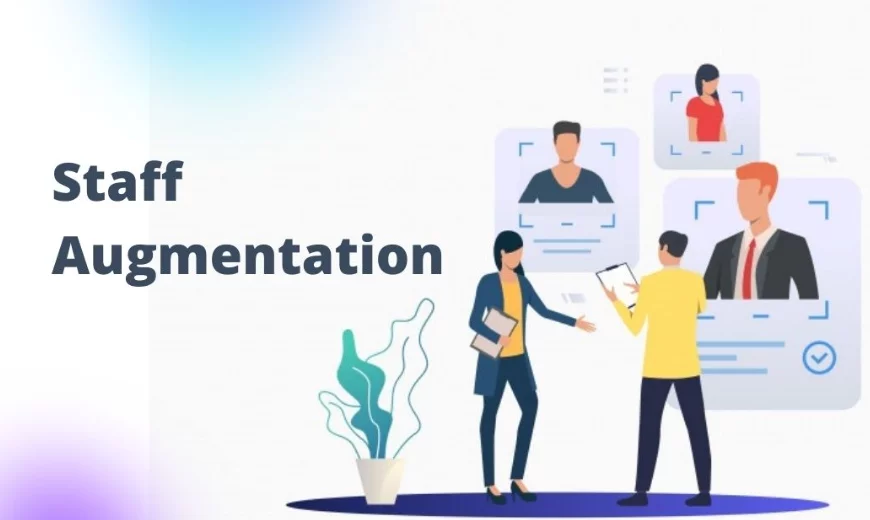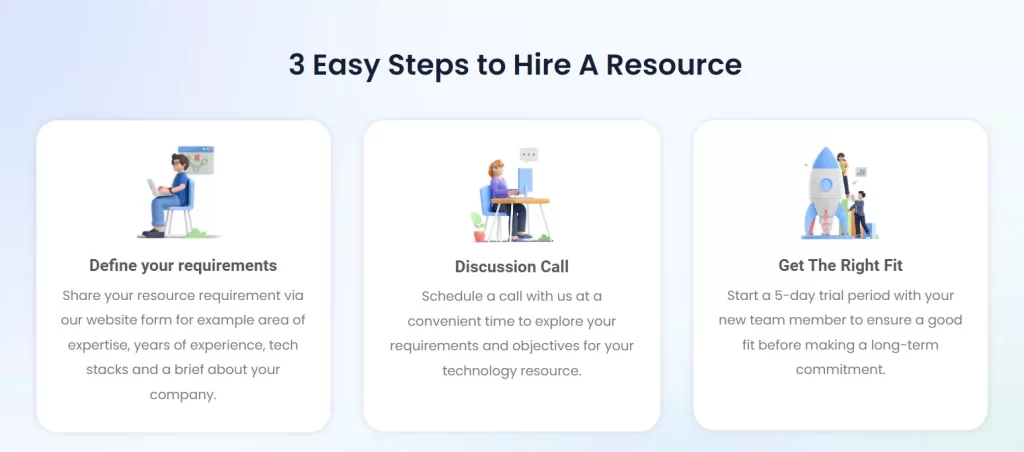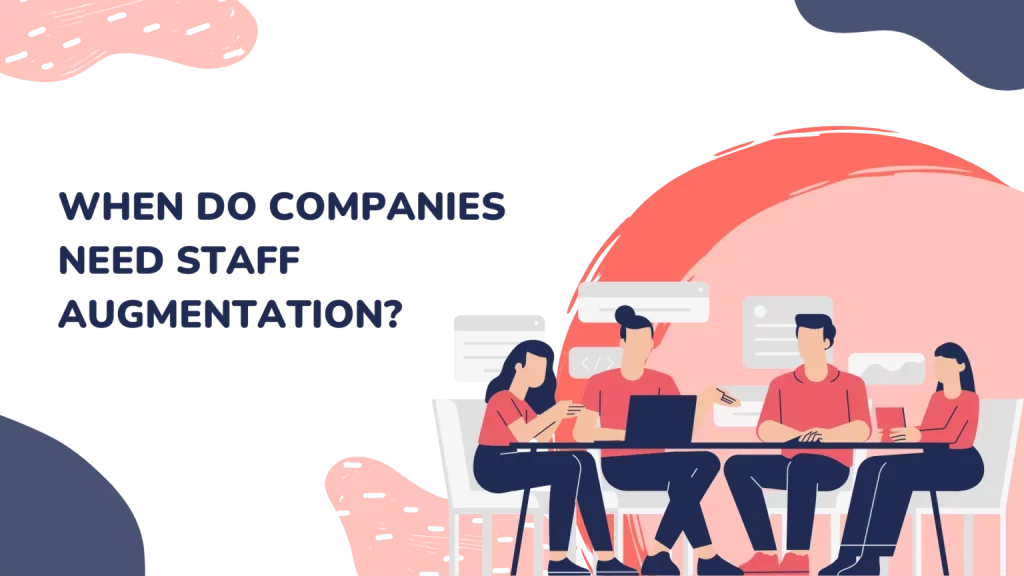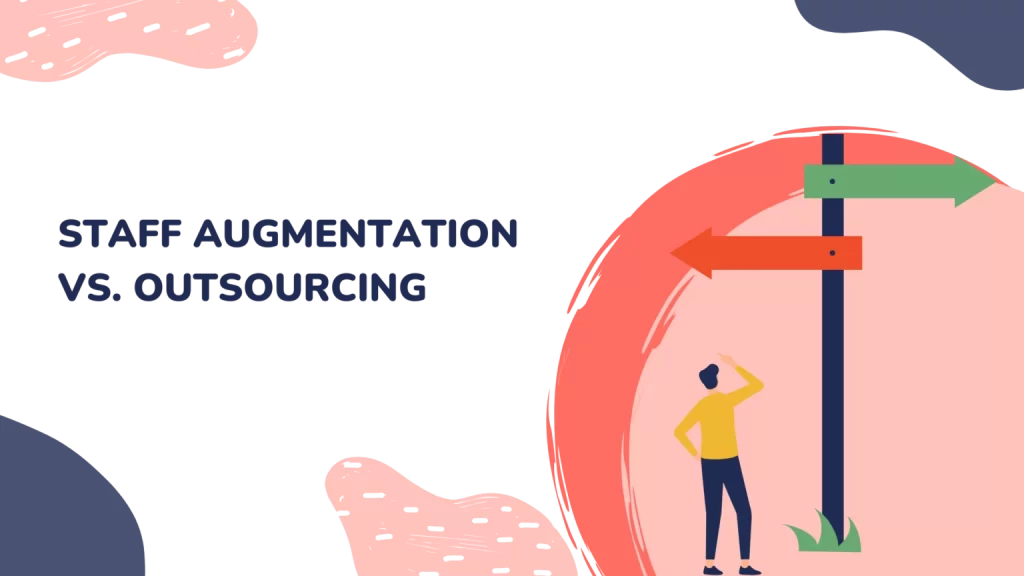
© 2024 | All Right Revered.

Senior Marketing Associate
Passionate about marketing with an affinity to learn about the ever-developing IT sector.

In the most literal sense, the term ‘Staff Augmentation’ refers to making one’s staff greater in size. The correct definition is not far from this.
Staff augmentation can best be described as an outsourcing strategy comprising hiring professionals from an external agency to add value to an organization’s workforce via efficiency and productivity. These contracts are usually built on a contractual basis and run for a short period of time.
This model goes all the way back to the start of industrialization, where workers were hired on a temporary basis to meet the demand of manufacturing industries. By the 1960s, the term ‘staff augmentation’ was formally adopted. It referred to hiring external resources to assist an organization’s workforce.
From being primarily utilized in government and military projects, staff augmentation was integrated into mainstream businesses with the advent of the internet boom in the late 1990s. The focus here lies on outsourcing non-core functions to external agencies, to help save costs.
In the present day and age, the increased availability of remote work options has made staff augmentation a more viable option than ever before. This enables businesses to access specialized skills without the complexity of hiring full-time employees.
As a result, facilitating organizations to stay agile and competitive in an ever-changing market has become more feasible than ever.
This model involves partnering with a staffing agency or a consulting firm to help find the best fit of candidates to meet one’s needs. The process is highlighted below:


Staff Augmentation offers several benefits to businesses in the form of cost savings, flexibility, and unrestricted access to specialized skills and labor, without having to employ on a permanent basis.
While staff augmentation is a popular solution for organizations looking to supplement their workforce and skill base, the real challenge lies in knowing when to use it.
Forbes writes a great article mentioning some tips companies need to consider when choosing the right staff augmentation services for their organizations.
Businesses often incur fluctuations in their workload throughout the year and would want staff on hand to meet that demand accordingly.
For example, a retail business may need additional staff during the holiday season in order to cater to increased traffic.
In this case, staff augmentation allows businesses to add temporary staff during such peak periods without getting into the hassle of hiring permanent staff.
There are instances where an organization may need to hire someone out of their typical employee skillset. For example, a company may need to hire a graphic designer to work solely on a new marketing campaign.
Staff Augmentation allows businesses to hire temporary staff to fulfill a particular demand, with specific skills, need to complete a project or initiative without getting into the hassle of making a permanent hire.
Staff Augmentation service providers cover everyday costs associated with the model. This includes management costs, training, office spaces, and other related administrative costs.
This is extremely helpful especially when the local hourly rates of employees are much higher than those in another location, such as Pakistan.
By compensating for time and costs, staff augmentation models allow organizations to tilt a majority of their efforts on higher functions in driving the business forward and promoting growth and productivity.
In case of both employee leaves and a hiring freeze, organizations find themselves understaffed. In the case of a hiring freeze, staff augmentation allows organizations to supplement their workforce without hiring permanent staff, in a cost-effective manner.
In the case of employees on leaves for a significant period, such as maternity or medical leave, staffing shortages can be addressed by adding temporary staff to the workforce to help manage the workload till these permanent employees are back on the job.
Now that we have taken a look at when organizations should aim to take up a staff augmentation model or service, now let us take a look at the different types of staff augmentation.
This will help give a better understanding and perspective into what the best approach for your organization might look like.
This type of staff augmentation involves hiring temporary staff from within your own country. This is useful for organizations that require staff to work on-site or within the same time zone. On-shore Staff Augmentation gives access to a larger pool of skilled professionals and reduces the risk involved with communication and cultural barriers.
In this type of Staff Augmentation, the staff is hired on a temporary basis from a different country. It is useful for organizations that require staff to work in a different time zone or if that organization is looking to reduce labor costs.
Another upside to this model is that organizations gain access to skilled professionals from around the world in a cost-effective manner.
This involves hiring temporary staff from neighboring countries. Best suited for organizations operating within a time zone bracket and similar cultural environment, nearshore staff augmentation is even more cost-effective than on-shore staff augmentation considering that the staff is being hired from neighboring countries as opposed to countries far off with a greater pay disparity.
Through project-based staff augmentation, organizations can hire staff for a specific project or initiative. It is best suited for businesses that require individuals with a specialized skill set.
This serves as a cost-effective solution that allows businesses to expand their pool of specialized skills, without hiring permanent staff and dedicated their efforts on completing short-term projects.
Like any business solution, the immense benefits of staff augmentation come with its share of downsides as well. Let us take a look at what each side has to offer a business.
Through staff augmentation, businesses can supplement their workforce with skilled professionals on both a short-term and long-term basis, providing flexibility to meet changing staffing needs.
This flexibility can be especially useful for businesses that experience seasonal fluctuations or those that operate on project-based work that demands additional resources.
Organizations can get access to specialized skills or expertise that may not other be available within their workforce. This is helpful when businesses need to tackle complex or technical projects requiring specialized skills.
As mentioned earlier in this blog, staff augmentation is an extremely cost-effect business solution. Organizations are spared from having to invest in recruiting, hiring, and training permanent staff.
Staff augmentation helps reduce the risk associated with hiring permanent staff. This is extremely helpful when evaluating the long-term needs of a company as temporary staffing is accessible for short-term projects.
By providing additional resources needed to complete projects on time, staff augmentation boosts productivity for a business allowing them to tackle projects and initiatives more efficiently and effectively.
Communication conflicts between temporary and permanent staff can often affect productivity and collaboration. Temporary staff may have a different style of communication which when coupled with a different cultural background can make it difficult to effectively communicate with permanent staff.
Challenges in terms of working style, expectations, and communications can result from cultural differences between temporary and permanent staff.
These can affect team dynamics and productivity. It is for this exact reason that businesses must be proactive in managing these differences.
Temporary staff will not be inclined to feel the same amount of loyalty or commitment to the business as compared to permanent staff. This can affect productivity and morale.
Temporary staff may be less invested in the long-term success of the business and so businesses must take the relevant actions needed to address this potential issue.
Temporary staff may not be familiar with the company culture, processes, or systems. This can lead to issues in productivity and collaboration.
Hence, it is essential that businesses be proactive in integrating temporary staff into the team so that they may feel the same level of belonging as permanent staff.
Another consequence of staff augmentation is reduced control over the quality and output of work in view of the fact that temporary staff has their own styles of work and processes.
Hence, businesses must ensure that temporary staff follows and adhere to the same quality of output standards as permanent staff.

Outsourcing can be described as a business practice where a company hires an external organization to perform and complete a task, function, or service that is usually performed in-house.
An external organization can be located in either the same country as the hiring company or a different country altogether.
The outsourcing of business functions can range from simple tasks such as customer service or data entry to more complex services such as software development, accounting, or manufacturing.
One of the primary benefits of outsourcing is cost savings. Outsourcing allows companies to access specialized skills and expertise without having to invest in expensive training or hiring processes.
Additionally, outsourcing can help companies save money on salaries, benefits, and overhead costs.
Outsourcing also allows companies to focus on their core competencies. By outsourcing non-core functions, companies can free up resources and focus on their core business activities which ultimately drives up productivity and efficiency.
The level of control between staff augmentation and outsourcing fundamentally varies. Staff augmentation involves hiring temporary staff working directly under the supervision of the hiring company.
This means that the company has more control over the work being done and can consequently provide guidance and feedback as needed.
On the other hand, with outsourcing, work is handed to an external organization. They may have their own processes and methods of completing the work assigned to them. This can result in much less control, comparatively, over the outcome of the work.
Making a decision based on this factor depends on the need and nature of the project under work.
Another important factor to consider between these two approaches is the costs involved. Staff augmentation can actually be more costly than outsourcing, as the company is responsible for paying the temporary staff’s wages and benefits.
However, outsourcing comes with its own costs, such as vendor fees and communication expenses. When considering cost, it is essential to weigh the overall expenses of each option and determine which approach fits within the company’s budget.
Another significant factor in deciding between these two approaches is expertise. Staff augmentation is useful when a company requires a specialized set of skills for a short period of time.
Hiring temporary staff with expertise in a particular area can help the company complete a project or meet a deadline.
On the other hand, outsourcing provides access to expertise that is not available in-house.
For example, outsourcing IT functions to a vendor with specialized knowledge can be a cost-effective way to improve IT capabilities without the need for hiring a full-time staff member.
The timeframe counts as another factor in making a crucial consideration of these two approaches. Staff augmentation is best suited for short-term projects that require additional resources quickly.
On the other hand, outsourcing can be a better option for long-term projects requiring ongoing support. Outsourcing can also serve as an effective way to handle ongoing work that does not require a full-time staff member, such as bookkeeping or customer service.
Lastly, it is undoubtedly important to consider the company culture when deciding between staff augmentation and outsourcing. In staff augmentation, the temporary staff holds the potential to bring fresh perspectives and ideas to the company.
Alternatively, this staff may just be as invested in the company’s culture as full-time employees.
On the other hand, in outsourcing, an external organization is brought on board and their workforce essentially constitutes an entity with an entirely different set of cultures and values. Consequently, it is important to accordingly evaluate whether the vendor’s culture aligns with the company’s values and missions, or not.
To sum up, staff augmentation can serve as a valuable resource for businesses looking to augment their existing workforce. By hiring temporary staff with specialized skills, companies can complete short-term projects, fill skill gaps, and manage fluctuations in demand without the long-term commitment of hiring full-time staff.
While there are several factors to consider, such as costs, culture, and control over the project, businesses can ultimately make informed decisions to support their goals and objectives by enlisting staff augmentation as the best fit for the staffing needs.
Click here to read up on other interesting blogs on the latest technologies and developments.
Share the details of your project – like scope, timeframe, or business challenges. Our team will carefully review them and get back to you with the next steps!

© 2024 | All Right Revered.
This guide is your roadmap to success! We’ll walk you, step-by-step, through the process of transforming your vision into a project with a clear purpose, target audience, and winning features.